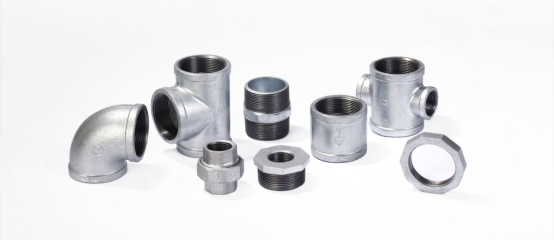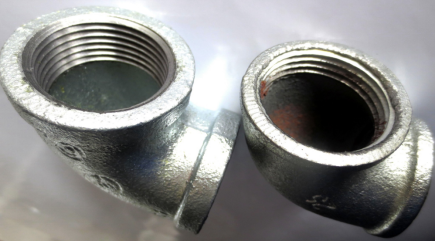May. 25, 2023
Galvanizing is one of the topmost inventions of humanity. By laying a subcaste of zinc on the face of iron or sword to insulate oxygen and water, the iron cannot suffer the chemical response needed to rust, thereby perfecting the continuity of ironware.
1. History
According to affiliated archaeological findings, as beforehand as the 17th century, the Indians had applied galvanizing technology to the armor of dogfaces. In 1742, the French druggist Melouin first proposed that iron could be immersed in molten zinc to fleece the face of iron with a zinc subcaste. In 1837, the British Henry William Crawford attained a patent for a analogous technology, and industrialized hot- dip galvanizing product began in the United Kingdom. Fueled by the British Industrial Revolution, by 1850, about 10,000 tons of zinc were being used annually by the British galvanizing assiduity for rust forestallment. According to the applicable exploration statistics of Chinese scholars, as of 2006, about 50 of the periodic zinc product was used for galvanizing, of which about 90 was used for hot- dip galvanizing.
2. Application
Now, the galvanizing process is extensively used in artificial products. For illustration, galvanized factors are used considerably in water systems or fire flighting systems. Through galvanizing, a galvanized subcaste is formed on the essence face, which will insulate the air and water, so as to help the essence corridor from rusting and increase the service life of the essence corridor.

Jianzhi galvanized pipe fittings
3. Hot galvanized and cold galvanized
1) Hot galvanized
Hot-dip galvanizing (HDG) is one of the common methods of galvanizing, which involves the complete immersion of iron or steel in molten zinc. The formation process of the hot-dip galvanized layer is the process of forming an iron-zinc alloy between the iron matrix and the outermost pure zinc layer. The iron-zinc alloy layer is formed on the surface of the workpiece during hot-dip plating, so that the iron and the pure zinc layer are combined. The advantage of hot-dip galvanizing lies in its strong anti-corrosion ability, good adhesion and hardness of the galvanized layer, so as to achieve the purpose of anti-corrosion.
2) Cold galvanized
Cold galvanizing is also known as electro-galvanizing. Electro-galvanizing is an electrochemical method, using zinc ingots as anodes and steel as cathodes. After the zinc atoms lose electrons, they dissolve into the electrolyte in an ionic state, and the zinc ions get electrons on the steel and reduce to zinc atoms and deposit on the steel surface. The use of cold galvanized zinc is small, only 10-50g/m2, which is the process of using electrolysis to attach a layer of metal film to the surface of metal or other materials. The process of forming a uniform and dense metal layer can prevent corrosion, improve wear resistance, electrical conductivity, reflectivity and enhance aesthetics.
3) Difference
l Purpose
Hot-dip galvanizing is suitable for long-term rust prevention of steel parts for outdoor work, such as highway fences, power towers, large-size fasteners, and other relatively "rough" workpieces. Older iron water pipes were also hot-dip galvanized. Electro-galvanizing is used for rust prevention of indoor parts, such as chassis bottoms, panels, and small-sized fasteners.
l Price
The galvanizing process is faster than other coating application methods, and can avoid the time required to paint on the site after installation; the cost of hot dip galvanizing for rust protection is lower than that of other paint coatings. In general, the cost of hot dip galvanizing is lower than applying other protective coatings. The reason is simple, other protective coatings such as sanding and painting are labor-intensive processes, whereas hot-dip galvanizing processes are highly mechanized and tightly controlled in-plant construction.
4.Threading after galvanizing
According to the demand, two kinds of galvanizing process of hot- dip galvanizing and electro- galvanizing are used for jianzhi pipe fittings. Electro- galvanized pipe fittings are generally reused first and also electrified, and the cost of this process is veritably low. The disadvantage is that the inner face isn't easy to be plated, the black and red rust spots are serious, and the consistence of the coating isn't easy to control. During the galvanizing process, the collision of each other will beget serious damage to the thread, which directly affects the delicacy of the thread and causes difficulties in installation and collaboration. In order to avoid the below blights, the jianzhi pipe fittings don't vacillate to increase the cost, and all are galvanized first and also reused to insure the thread delicacy. At the same time, it also avoids the problem of thread knocking caused by product collision during the galvanizing process, and further ensures the smooth installation of the product during use.

The left is galvanized first and then Threaded, the right is first Threaded and then galvanized
I believe that you have a certain understanding of the galvanizing knowledge of pipe fittings by seeing here. However, please click the link below to enter our website, If you want to know more. We're now working on erecting our website into a huge depository of knowledge about the pipe fittings assiduity, which will store a large number of assiduity knowledge papers, you're welcome to explore.
https://www.malleableiron-pipefitting.com/
SAFER
PRODUCT INFO
ABOUT JIANZHI
TECH DATA
Contact Us
E-mail: sales1@jianzhi-fitting.com
Tel: +86 18698027872
Office In Tianjin:
Heping District, Tianjin, China.
Production Base 1:
Chifeng, Inner Mongolia, China.
Production Base 2:
Tangshan City, Hebei Province, China.
Production Base 3:
Schelei Street,Baicoi City,Prahova County,Romania
Service email: info.ro@jianzhi-fitting.com
Sales email: market.ro@jianzhi-fitting.com
Tel: +40(755)011 849
